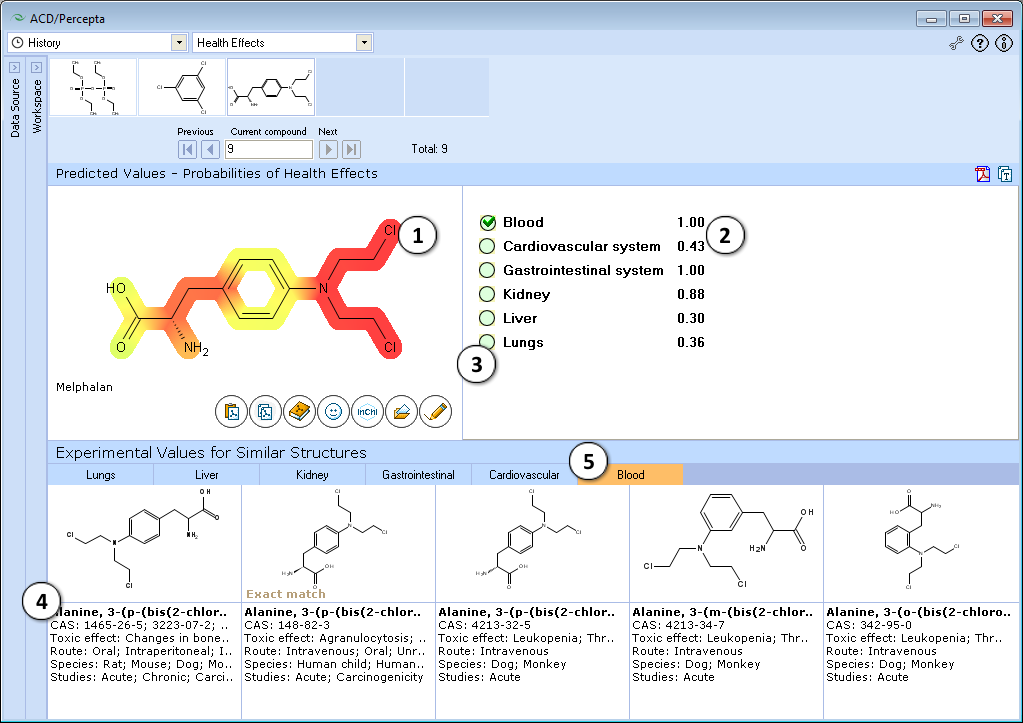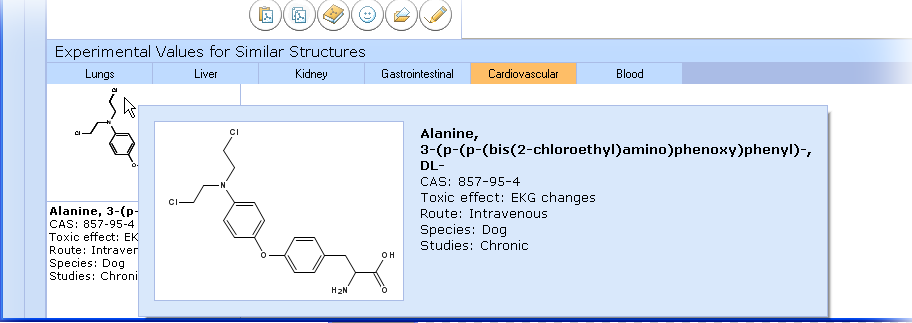Health Effects: Difference between revisions
No edit summary |
|||
| Line 28: | Line 28: | ||
<br /> | <br /> | ||
<div class="mw-collapsible | <div class="mw-collapsible"> | ||
==Technical information== | ==Technical information== | ||
Latest revision as of 10:00, 15 June 2017
Overview
Health Effects module presents probabilistic predictions of the test compound exhibiting organ-specific toxicity. The models are based on the data for more than 100,000 compounds collected from chronic, subchronic, acute toxicity and carcinogenicity studies with adverse effects reported on particular organs or organ systems. Predictions provided by the described modules enable the researcher to obtain a quick estimate of potential safety concerns related to the chemicals of interest.
Features
- Health Effects module calculates probabilities of organ-specific adverse effects at therapeutic dose range.
- Visualizes structural fragments that are probably responsible for the adverse effect in a particular organ (parts of the molecule associated with toxic action are displayed in red).
- Various species and routes of administration
Interface

- Highlighted red parts of the molecule are associated with corresponding Health Effect
- Probability of Health Effect at therapeutic dose range
- Click the button to view corresponding Health Effect and open the corresponding tab with similar structures. Sometimes the buttons are disabled, when according to the certain diagnostics the illustration of Health Effect might be incorrect.
- Up to 5 similar structures from the training set with route, species and toxic effect. Structure name and CAS number provided if available. Hower over similar structures to view a pop-up window with a larger representation of the structure and complete information on adverse Health Effect on corresponding organ system:

- Click the tab for browsing the similar structures. If no similar structures are found, the tab is disabled.
Note: Health Effects are identified only for potentially toxic compounds.
Technical information
ACD/Health Effects module provides assessment of the likelihood for the query compound to cause any adverse effects on a number of organs and their systems (blood, cardiovascular system, gastrointestinal system, kidneys, liver, and lungs) within the therapeutic dose range. The probability predictions come from the statistical analysis of a carefully reviewed compilation containing merged information from various types of toxicity studies (i.e., acute, mid-term, long-term studies, etc.) covering a multitude of species and administration routes for nearly 15,000 individual unique compounds. Results are additionally illustrated with predicted probability distribution plots indicating fragments most likely associated with the unwanted effect of a compound on a corresponding organ.
Training set size:
| Organ or Organ System | Number of compounds | |
| Blood | 4, | 704 |
| Cardiovascular System | 1, | 605 |
| Gastrointestinal System | 5, | 115 |
| Kidney, Ureter, and Bladder | 3, | 463 |
| Liver | 4, | 906 |
| Lungs | 14, | 305 |
Main sources of experimental data:
- Registry of Toxic Effects of Chemical Substances Database (RTECS®)